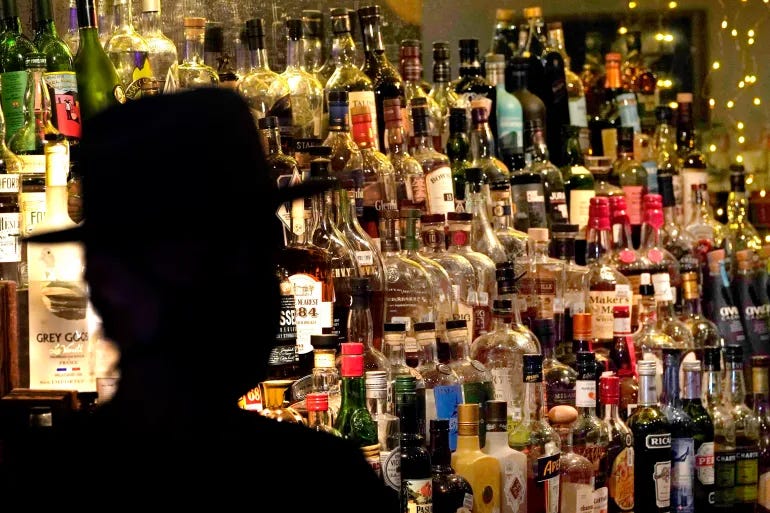Surgeon General Calls for Cancer Warnings on Alcohol Labels Amid Rising Health Concerns
A proposed change to alcohol labels could mark the first major update in 35 years, as new evidence links alcohol to cancer risks.
U.S. Surgeon General Dr. Vivek Murthy has sparked a renewed conversation about public health by advocating for cancer warning labels on alcoholic beverages. His proposal is based on a new advisory, which highlights the growing body of evidence that links alcohol consumption to several types of cancer.
The push for updated labels follows the Surgeon General’s concern that current alcohol warning labels, introduced in 1988, are outdated. These labels, which mainly address pregnancy risks and impaired driving, do not mention the cancer risks associated with drinking.
Dr. Murthy emphasized the need for consumers to be more aware of the risks. “Cancer risk increases as you drink more alcohol,” he wrote on the social media platform X, encouraging the public to consider reducing alcohol intake to lower their cancer risk.
Alcohol and Cancer: A Growing Risk
According to the Surgeon General’s report, alcohol consumption is linked to around 100,000 cancer cases and 20,000 deaths annually in the U.S. It is considered the third-leading preventable cause of cancer, after tobacco use and obesity. Internationally, alcohol-related cancer rates are also alarming. In the World Health Organization’s European region, alcohol consumption accounted for 180,000 cancer cases and 92,000 deaths in 2018.
Despite these stark statistics, public awareness remains low—only 45% of Americans recognize alcohol as a cancer risk, compared to 91% who acknowledge the dangers of tobacco.
The Debate Over Alcohol and Cancer Risk
Experts agree there is no "safe" level of alcohol consumption when it comes to cancer risk. Even small amounts can increase the likelihood of developing cancer. For example, consuming two drinks a day is linked to an elevated lifetime risk of cancer in both men and women.
While there are questions about the effectiveness of text-only warnings, the Surgeon General’s proposal draws parallels to cigarette warning labels, which studies have shown to reduce smoking rates. Timothy Naimi, Director of the Canadian Institute for Substance Use Research, argues that warning labels help provide transparency and allow consumers to make informed decisions, something that’s often lacking with alcohol products.
Dr. Carina Ferreira-Borges from the WHO believes that health warning labels on alcohol can play a crucial role in raising awareness and supporting broader alcohol policies aimed at reducing consumption.
Can Labels Curb Drinking?
Beyond labeling, experts suggest other regulatory measures are needed to address alcohol-related harm. Raising the federal excise tax on alcohol is one such proposal, though efforts to do so have faced setbacks in recent years. Experts also emphasize the importance of limiting alcohol marketing and reducing its availability.
Countries like Sweden and Thailand have successfully reduced alcohol consumption through tax increases and advertising restrictions, setting an example for the U.S. to follow.
Alcohol's Impact on Health
The Surgeon General’s advisory also outlines the different ways alcohol increases the risk of at least seven types of cancer, including those of the liver, mouth, and breast. Alcohol damages DNA, disrupts hormone levels, and heightens the absorption of carcinogens from other sources, such as tobacco.
The Complex Debate Over Moderate Drinking
While some argue that moderate alcohol consumption may offer heart health benefits, emerging research casts doubt on these claims. Studies now suggest that the potential heart health benefits of moderate drinking are outweighed by the overall risks, particularly when it comes to cancer.
Industry voices, however, insist that moderate drinking should not be dismissed entirely and that any new labels should reflect the full body of scientific evidence.
Will Congress Approve New Labels?
Despite the Surgeon General’s push, updating alcohol warning labels is likely to face significant opposition from the alcohol industry, which spends millions lobbying Congress. Similar resistance arose when the Alcoholic Beverage Labeling Act of 1988 was passed, resulting in small, less impactful warning labels.
Nevertheless, trends suggest a shift in public attitudes toward alcohol, particularly among young people. Data shows a decline in alcohol consumption among Americans aged 18-25, with a growing interest in non-alcoholic alternatives.
Whether or not Congress acts on the proposed changes, the growing awareness of alcohol-related health risks may pave the way for further regulatory efforts to protect public health.


